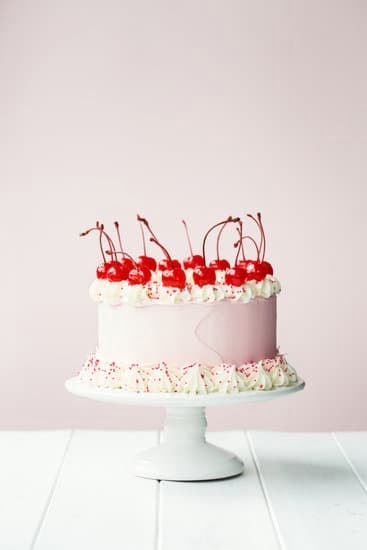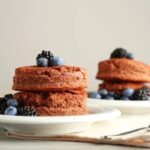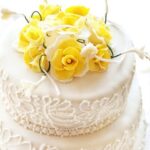Have you ever wondered how to describe cake decorating? Cake decorating is a form of art that involves transforming a simple cake into a beautiful and delicious masterpiece.
In this article, we will explore the basics, techniques, design inspiration, color and texture, as well as tips and tricks for perfecting your cake decorating skills. Whether you’re a beginner looking to learn the ropes or an experienced baker seeking new inspiration, this comprehensive guide will help you understand the art of cake decorating and take your skills to the next level.
Cake decorating is not just about making a cake look pretty; it’s about using different tools and materials to create stunning designs that showcase your creativity and personal style. From icing to fondant to piping, there are countless techniques that can be used to elevate your cake decorating game. In this article, we will delve into these various methods and explore how they can be utilized to bring your vision to life on a cake.
In addition to the technical aspects of cake decorating, we will also discuss finding design inspiration, utilizing color and texture effectively, and avoiding common mistakes that can hinder your creative process. By understanding the fundamentals and exploring different avenues for creativity, you’ll be able to express yourself through your cake designs in unique and innovative ways.
So whether you’re preparing for a special occasion or simply want to hone your skills as a baker, read on to discover the art of cake decorating as a creative and expressive skill.
The Basics
When it comes to cake decorating, having the right tools and materials is essential for creating beautiful and professional-looking designs. Whether you are a beginner or an experienced baker, there are a few basic items that are necessary for successful cake decorating.
Essential Tools
Some of the essential tools for cake decorating include piping bags, tips, offset spatula, turntable, and a bench scraper. Piping bags and tips are used for applying frosting in various designs and patterns, while an offset spatula is used for smoothing frosting on the cake. A turntable is important for easily rotating the cake while decorating, and a bench scraper helps in creating clean edges.
Materials for Decoration
In addition to tools, there are also various materials that are commonly used in cake decorating. These include different types of frosting such as buttercream and royal icing, as well as fondant for creating intricate designs. Edible decorations such as sprinkles, edible glitter, and edible pearls can add an extra touch of elegance to a decorated cake.
Investing in Quality
It’s important to invest in high-quality tools and materials for cake decorating. This not only ensures better results but also makes the process easier and more enjoyable. Good quality tools can last longer and provide more consistent results when compared to lower-quality alternatives.
By understanding the essential tools and materials needed for cake decorating, you can set yourself up for success in creating stunning designs that will impress any audience. With these basics in place, you will be ready to explore different techniques and unleash your creativity through this expressive art form.
Techniques
Cake decorating is a creative and expressive skill that involves various techniques to transform a plain cake into a work of art. Whether you are a beginner or an experienced baker, mastering different cake decorating techniques can open up a world of possibilities for creating stunning and delicious masterpieces. Here are some popular cake decorating techniques to explore:
- Icing: This classic technique involves using buttercream or royal icing to cover the surface of the cake. It can be smoothed for a flawless finish or textured with different patterns and designs.
- Fondant: Fondant is a versatile sugar paste that can be rolled out and draped over the cake to create a smooth and polished look. It can also be shaped, molded, and sculpted into intricate designs.
- Piping: Piping involves using a pastry bag and various tips to create decorative elements such as borders, flowers, lettering, and intricate patterns with icing.
Each of these techniques requires practice and patience to master, but with dedication, you can elevate your cake decorating skills to new heights. Experimenting with different methods will not only enhance your creativity but also allow you to develop your own signature style.
In addition to these traditional techniques, modern advancements have introduced innovative methods such as edible printing, airbrushing, and sculpting with modeling chocolate. As you embark on your journey in cake decorating, don’t hesitate to explore new technologies and materials that can further enhance your creations. Understanding the versatility of different techniques will give you the freedom to bring any design concept to life on a delicious canvas.
Design Inspiration
When it comes to cake decorating, finding design inspiration is a crucial step in creating beautiful and unique cakes. Whether you’re a beginner or an experienced decorator, drawing inspiration from various sources can help you take your cake decorating skills to the next level. Here are some ways to find creative ideas for cake decorating:
1. Online Platforms: The internet is a treasure trove of creative ideas for cake decorating. Websites like Pinterest and Instagram are filled with photos and tutorials of stunning cakes that can spark your creativity. You can also join online communities and forums dedicated to cake decorating to connect with other decorators and share ideas.
2. Nature and Art: Drawing inspiration from nature and art can lead to some of the most breathtaking cake designs. Take a walk in nature, visit art galleries, or simply browse through art books to find colors, patterns, and shapes that can be translated into edible works of art.
3. Special Occasions: Tailoring your cake designs to special occasions such as weddings, birthdays, or holidays can provide you with endless inspiration. Consider the theme of the event or the personality of the recipient when planning your cake design, and let it guide you in creating a truly meaningful and memorable masterpiece.
By exploring these different sources of inspiration, you can elevate your cake decorating skills and create cakes that are not only visually stunning but also meaningful and unique.
So at Eats & Crafts we always recommend new enthusiasts joining our cause by following our community-based classes offered online where they would meet people who have previously faced their own obstacles.
Color and Texture
When it comes to cake decorating, color and texture play a crucial role in creating visually appealing and delectable creations. The use of color can evoke different emotions and set the tone for the occasion, while texture adds depth and dimension to the design. Understanding how to utilize color and texture effectively can take your cake decorating skills to the next level.
One way to enhance the visual appeal of your cakes is by understanding color theory. Color theory involves understanding the color wheel, complementary colors, and how different colors work together to create harmonious or contrasting effects. For example, using complementary colors like blue and orange can create a vibrant and eye-catching contrast on a cake, while using analogous colors like green and yellow can create a more soothing and harmonious effect.
In addition to color, texture also plays a significant role in cake decorating. Texture can be added through various techniques such as piping, fondant ruffles, or edible decorations like sugar flowers or sprinkles. Experimenting with different textures can add interest and intrigue to your cake designs, making them visually stunning. Mastering the use of both color and texture will allow you to create cakes that are not only delicious but also works of art.
| Color Theory | Texture Techniques |
|---|---|
| Understanding the color wheel | Piping |
| Complementary colors | Fondant ruffles |
| Analogous colors | Sugar flowers |
Tips and Tricks
Choosing the Right Tools and Materials
When it comes to cake decorating, having the right tools and materials can make all the difference. Some essential items include piping bags, tips, offset spatulas, a turntable, and a good quality stand mixer. It’s also important to invest in high-quality ingredients for your decorations, such as fondant and food coloring. Additionally, having a good set of decorating brushes can be useful for adding intricate details to your designs.
Practice Makes Perfect
One of the best ways to improve your cake decorating skills is through practice. Whether you’re trying out new icing techniques or experimenting with fondant designs, don’t be afraid to make mistakes. The more you practice, the more comfortable you’ll become with different decorating methods. Consider starting with simple designs and gradually working your way up to more complex ones as you gain confidence.
Seeking Inspiration
Finding inspiration for your cake decorating projects can be a fun and rewarding part of the process. Look for inspiration in various places such as nature, art, fashion, or even architecture. You can also browse through decorating books and magazines or explore online platforms like Pinterest and Instagram for creative ideas. By seeking out inspiration from different sources, you can develop a unique style that sets your cake decorations apart.
As you continue to learn how to describe cake decorating techniques effectively and incorporate expert tips into your practice routine, remember that patience is key in perfecting this art form. Ultimately, by honing these crucial skills and bringing creativity into play through design inspiration visualizing color selections as well as honing sound techniques enabling enhances textural composition; achieving mastery over cake decoration requires dedication and passion.
Common Mistakes
When it comes to cake decorating, there are common mistakes that beginners often make. One of the most frequent errors is using the wrong consistency of icing. It is important to use the right consistency for your specific decorating technique, whether it be piping, flooding, or creating textures. Using the wrong consistency can result in a messy and unprofessional-looking cake.
Another common mistake is not allowing the cake layers to cool completely before starting the decorating process. Attempting to decorate a warm cake can lead to a disaster, as the icing can melt and slide off the cake. It is crucial to have patience and allow your cake layers to cool down before applying any frosting or decorations.
In addition, over-mixing your frosting can also lead to issues in cake decorating. Over-mixing can cause air bubbles to form in the frosting, resulting in an uneven and rough texture when applied to the cake. It is important to mix your frosting until smooth and creamy, without overdoing it.
| Common Mistakes | Effects |
|---|---|
| Using wrong icing consistency | Messy and unprofessional-looking cake |
| Decorating warm cake layers | Melted icing and sliding decorations |
| Over-mixing frosting | Air bubbles leading to uneven texture |
Conclusion
In conclusion, cake decorating is truly an art form that allows for creativity and self-expression. From mastering the basics of using the right tools and materials to exploring various techniques such as icing, fondant, and piping, there are endless possibilities for creating beautiful and unique cake designs. Finding inspiration from different sources and learning how to utilize color and texture in decorating can further elevate your skills in this craft.
As you continue to develop your cake decorating skills, it’s important to remember that practice makes perfect. It may take time and effort to master the art of cake decorating, but with dedication and patience, you can achieve stunning results. Additionally, being aware of common mistakes and learning expert tips can help you avoid pitfalls and refine your techniques.
Ultimately, cake decorating is not only about creating visually appealing treats, but also about expressing yourself through your creations. Whether it’s for a special occasion or simply for the joy of baking, the art of cake decorating allows you to showcase your imagination and skill. So, keep experimenting, learning new methods, and pushing your creative boundaries to become a true master of cake decorating.
Frequently Asked Questions
How Do You Describe a Cake in Writing?
Describing a cake in writing involves using vivid and sensory language to convey its appearance, flavor, and texture. This may include details about the frosting, decoration, and any fillings or layers the cake has.
What Is the Art of Cake Decorating Called?
The art of cake decorating is called “patisserie” or “pâtisserie.” It encompasses the skillful and creative process of adorning cakes with various designs, colors, and edible embellishments to make them visually appealing.
What Is the Job Description for a Cake Decorator?
A cake decorator’s job description includes preparing and baking cakes, mixing ingredients for icing or frosting, using various tools to decorate cakes with designs or wording, and ensuring that the finished product meets quality standards. Additionally, they may be responsible for fulfilling customer orders and maintaining a clean work area.

Welcome to our cake decorating blog! My name is Destiny Flores, and I am the proud owner of a cake decorating business named Cake Karma. Our mission is to provide delicious, beautiful cakes for all occasions. We specialize in creating custom cakes that are tailored specifically to each customer’s individual needs and tastes.





